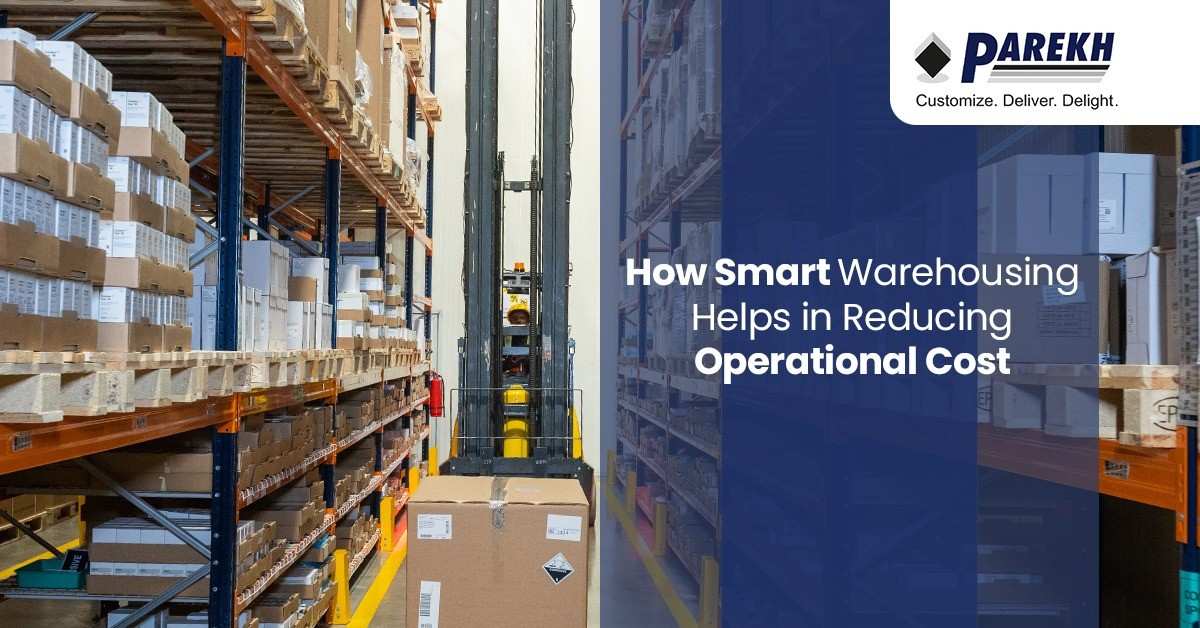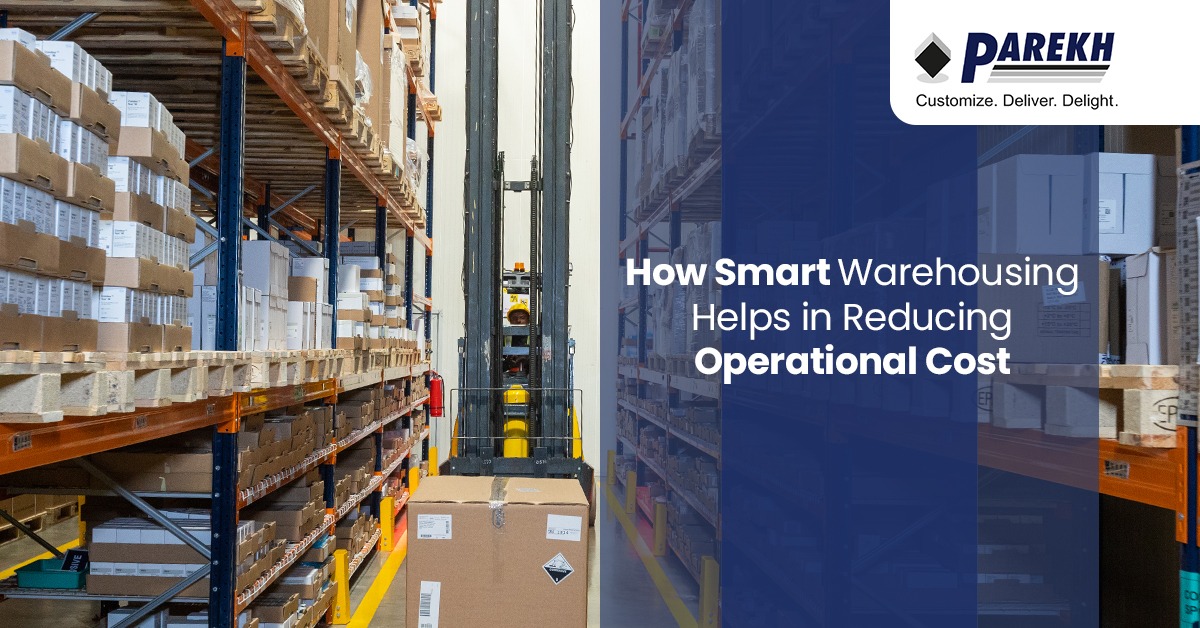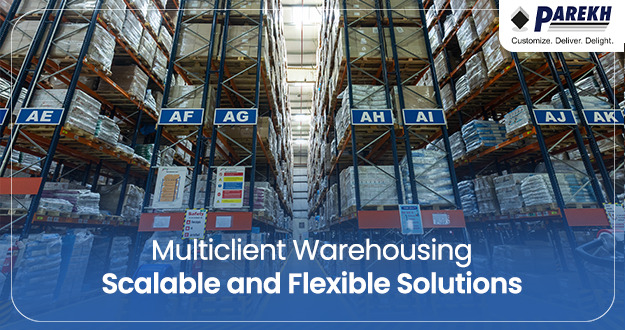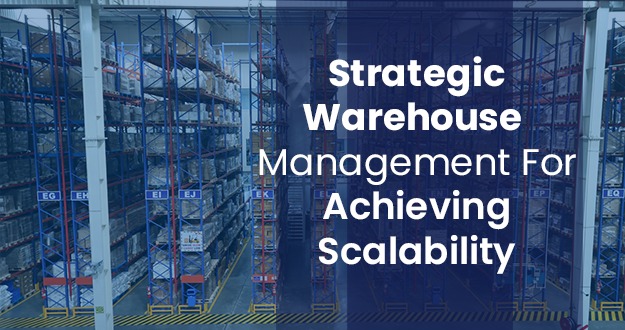
Published on: 17-09-2025
Author : PISPL Editor Team
How Smart Warehousing Helps in Reducing Operational Cost
In the fast-paced of supply chain and logistics, operational effectiveness is not a performance indicator—rather, it is a make-or-break business strategy for businesses to be profitable and scalable. One of the most powerful accelerators for this transformation is smart warehousing. Smart warehousing technologies are proving their worth by significantly cutting costs, boosting productivity, and enhancing service quality just weeks after they’re put into action. Nowadays, companies in healthcare sector are seeing smart warehousing as a vital growth strategy, rather than just a passing trend.
Let's examine how intelligent warehousing lowers operating expenses in a number of contemporary logistics domains.
Automation of Warehouse Operations Cuts Down Labor Dependency
Smart warehousing integrates technology into every stage of warehouse operations, replacing repetitive manual tasks with automated systems. PISPL leverages electronic proof-of-delivery (ePOD), QR-based tracking, and ERP-linked data capture systems to streamline the entire order lifecycle. Automation not only improves accuracy and speed, but reduces labor cost. Instead of paper-based reconciliations and human error-prone processes, digital tools manage everything from inventory entry to dispatch with minimal oversight. This not only decreases labor costs significantly but also allows the remaining workforce to be deployed more strategically, improving the cost-efficiency per unit handled.
Advanced Inventory Systems Prevent Overstocking and Dead Stock
Ineffective inventory management can be a sneaky but major cost when it comes to warehousing. Smart warehousing tackles this problem by providing real-time insights into stock levels, movements, and consumption rates. PISPL, for instance; keep tabs on thousands of SKUs across multiple locations using advanced warehouse management systems and smart dashboards. This kind of software not only spots slow-moving stock but also helps identify demand trends based on historical data. Thus, organizations can avoid tying up unnecessary capital in excess stock or losing on expired or unsellable products. By keeping the stock lean but agile, smart warehousing allows organizations to reduce waste, maximize liquidity, and attain optimized turnover ratios.
Cold Chain Optimization Avoids Product Loss and Non-Compliance
In industries like healthcare, managing temperature-sensitive logistics can be quite a challenge. That's where smart warehousing technologies come into play, like those used by PISPL. They feature centralized monitoring systems that keep an eye on over 160+ cold rooms in real time. These facilities include everything from deep freezers set at a chilling –90°C to chillers and rooms kept at a comfortable 25°C. Any deviation from the specified parameters triggers immediate alerts by email, SMS, and even physical alerts to provide immediate corrective actions. By adherence to 21 CFR Part 11 and approved shippers, spoilage is prevented, and the risk of incurring fines for non-compliance is minimized.
The cost savings here are two-fold—holding inventory of high value and avoiding regulatory setbacks.
Transport Integration and Route Planning Save Fuel and Time
Another frequently neglected factor in high operational expense is inefficient transport associated with warehousing. Intelligent warehousing solves this by closely integrating with transport management systems (TMS) to optimize delivery routes, load consolidate, and automate dispatch. PISPL's logistics network, for instance, employs telematics and geofencing for full-truck and part-truck loads transportation and vehicle diagnostics monitoring. The vehicles also have safety features such as fire suppression systems and real-time temperature data loggers. Such intelligent routing and fleet management not only saves fuel consumption and delivery time but also reduces vehicle downtime and maintenance costs, making for a more cost-effective logistics model.
Energy-Efficient Infrastructure Reduces Facility Overheads
Traditional warehouses are energy hogs, especially those with cooling, lighting, and 24/7 operations. Smart warehousing flips the model by incorporating sustainability into infrastructure. Warehouses operated by PISPL use high-efficiency LED lighting, solar panels, motion sensors, and inverter air-conditioning units to reduce power consumption. Cool roof paints are designed to cut down on thermal load, which helps lower air conditioning costs. Plus, smart systems keep an eye on energy usage across different areas, giving facility managers real-time alerts about any inefficiencies. Over time, this leads to noticeable savings on electricity bills and a smaller carbon footprint—making it a win for both your wallet and the environment.
Predictive Maintenance and Control Towers Prevent Expensive Downtime
When it comes to warehousing, downtime can really hit hard in terms of revenue, especially for businesses that rely on just-in-time inventory. That's where smart warehousing comes into play, using control towers to keep an eye on crucial systems around the clock—everything from fire safety alarms to UPS backups and fleet tracking. These control systems detect and flag anomalies before they cause disruptions. For instance, PISPL's system has real-time alerts in case of fire accidents, equipment malfunctions, and even QEHS issues.
Value-Added Services Scale Without Proportional Cost Increase
One of the most compelling advantages of smart warehousing is that it allows companies to offer enhanced services—like kitting, bundling, labeling, co-packing, and last-mile demo equipment delivery—without a spike in operational expenses. This is made possible through modular software systems, automation of repetitive tasks, and centralized digital dashboards. PISPL, for example, manages everything from call order processing to e-commerce integrations and customer complaint handling from a single platform. These services create new revenue streams and improve customer retention while the underlying costs remain relatively stable. In a conventional setup, each new service would require more manpower and overhead; smart warehousing avoids that escalation.
Conclusion
Smart warehousing is not an investment in technology; it's an expense-reducing strategy. Think about it: from manpower and energy savings to a safe cold chain and accurate inventory, all smart elements minimize operating costs. PISPL has already shown that adopting smart warehousing leads to greater efficiency, scalability, and a sustainable competitive advantage. If your Healthcare business is aiming to streamline its supply chain and enhance profitability, smart warehousing isn’t merely an option—it’s the way forward.



